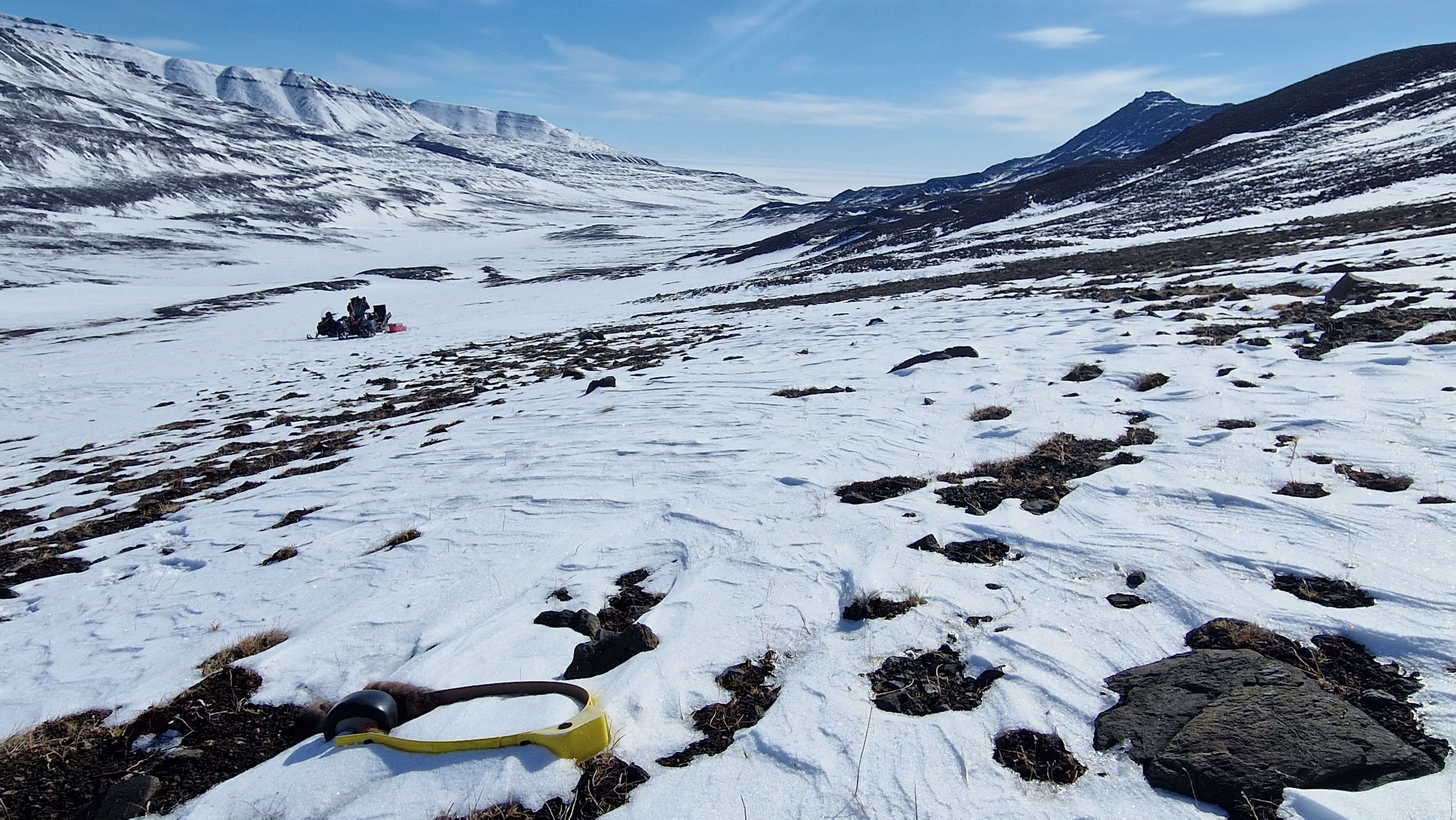During the winter months, Northeast Greenland is dark, cold, and inaccessible to people, so to study the herds of musk oxen that inhabit the area, a team of researchers from Aarhus University and Copenhagen ZOO working out of the Zackenberg Research Station have for several years put GPS collars on the oxen to monitor their movements and behavior.
As we have previously described, DANiNJECT equipment plays a role in immobilizing the large oxen when the collars are fitted, and it is also a solution developed in collaboration with DANiNJECT that helps researchers find the collars again.
"We've tried putting RECCO reflectors, which we got from DANiNJECT, on the collars to make it easier to find them again, and it has worked fantastically well," says Niels Martin Schmidt, professor at Aarhus University and head of the musk ox project.
Collars buried under snow
The collars can be remotely controlled to fall off the musk oxen so they can be collected again, and this must be done while there is still enough snow in the area.
"They are typically within 30-40 km of Zackenberg, which is easy enough when we can get around on snowmobiles, but more difficult if we have to walk. On the other hand, we run the risk of the collars being buried under snow, and then they can be hard to find."
 (Photo credit: Kent Bjørn Kristian E Jakobsen)
(Photo credit: Kent Bjørn Kristian E Jakobsen)"With the RECCO reflectors, we have been able to find them with an accuracy of less than half a meter, which is a big advantage when you have to dig 3 meters into the snow to find the collars. In the past, we've had to give up on finding some of them, and we really don't want to do that because they are very expensive and they contain a lot of valuable data.
With the collars collected, Niels Martin Schmidt and his team can start downloading gigabytes of data on the animals' movements, which have been monitored with both GPS and accelerometers and now can then be translated into a precise understanding of the animals' movements and behavior throughout the winter months.

(Photo credit: Niels Martin Schmidt)
(Photo credit: Lars Holst Hansen)
 Some of the collar were fitted with cameras that captures images a few times a day - amongst other things resulting in unique footage of a musk calf. (Photo credit: Muskox No. 64)
Some of the collar were fitted with cameras that captures images a few times a day - amongst other things resulting in unique footage of a musk calf. (Photo credit: Muskox No. 64)


.jpg)

